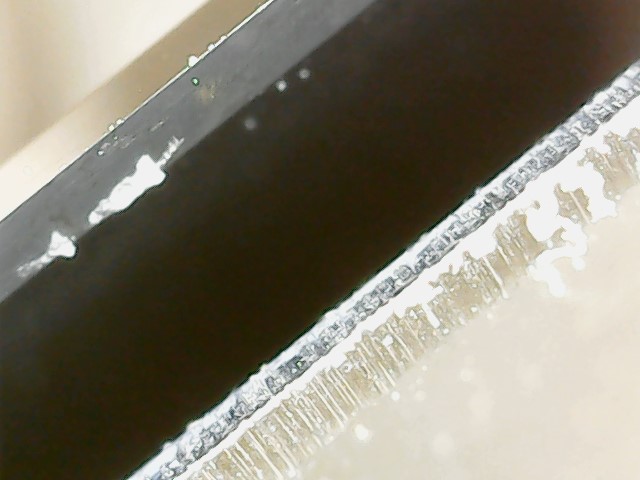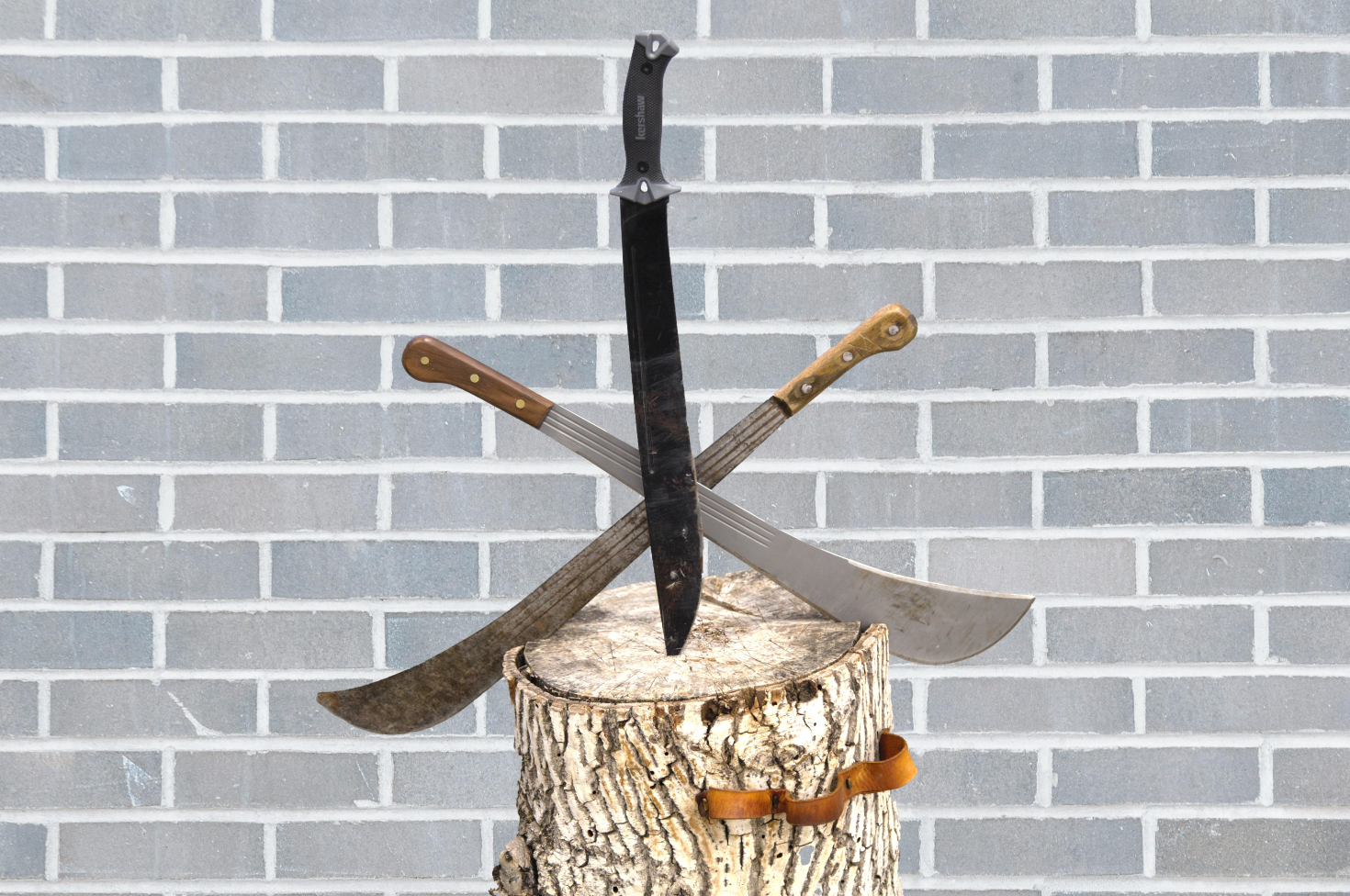
For many knife enthusiasts, sharpening is a bit of a chore. It’s something you have to do before you get to do the fun stuff. Knife sharpening takes time and practice, and often requires sharpeners that costs money that you would rather have spent on a new knife. We fall into the trap of “who needs a knife sharpener when you can just buy another knife.” As time goes by, we end up with a giant, growing pile of dull knives staring judgmentally at us.
If this describes you, I have good news. Sharpening does take time, and eventually you will have to pony up and get a knife sharpener instead of a knife, but when you do, it’s like Christmas morning. Suddenly the giant pile of dull knives becomes a giant pile of awesome, hair-splitting tools to add back to your rotation. So, if you’re not ready to get that sharpener yet, go right ahead and buy another knife. The sharpener will be here waiting for you!
But if you’re ready to breathe new life into your collection, here’s everything you need to know about knife sharpeners, starting with a simple question: What is “sharpness?”
What is Sharpness?
For purposes of this article, sharpness is defined by the thickness of the apex of the edge. The thinner the apex, the sharper the knife.

The edge apex is the point at which both sides of the bevel meet. To the naked eye, an edge may look like it comes to a perfect point, but zooming in will reveal that every edge, no matter how sharp, will ultimately have a rounded apex. For example, the sharpest object ever created was a nanoscopic tungsten needle, and its apex is only one atom thick. Physics will not allow anything to be sharper than that, and atoms are round.
But never fear. That rounded apex is where all the force you put behind the knife is multiplied until the material tears under the pressure. The key to sharpening is to shrink that apex as much as possible.
What is Sharpening?
Sharpening is shrinking the apex of your edge as much as you can. This is done by slowly removing material from the edge with abrasives. Most knife sharpeners will utilize multiple grits of abrasive to get the edge even more refined. The actual mechanism of sharpening the knife varies from sharpener to sharpener, but they are all trying to accomplish the same thing.
What is stropping or honing?

Stropping and honing methods of maintaining an edge that is already sharp. Often these are the last step in sharpening to remove a burr and polish the edge, but they don’t aim to remove material. Rather, they just straighten out the edge. Strops do this with a piece of leather, while hones use rods, high-grit stones, and various other materials. If your edge is truly dull, no amount of stropping or honing will make it sharp, but if the edge is just a bit catchy, a strop or hone will have it splitting hairs in no time.
No, that metal stick in your knife block is not a sharpener. It’s a honing rod.
Types of Knife Sharpeners
Sharpeners are like Subway orders. There are a million that work great, but at some point, everyone picks one they like and sticks with it for the rest of their life. If you get nothing else from this article, make it this: You can pick just about any sharpener, and if you learn to use it well, your knives will get sharp.
I normally don’t throw shade, but I’m going to throw some shade on FoodTubers really quick. They have this awful habit of making videos about sharpening that tell you awful lies, two to be precise. First, they will tell you that X sharpener is the gospel truth and Y sharpener will ruin your knives. Second, they tell you that only the technique they demonstrate will result in sharp knives.
Don’t believe them! Their knife sharpening systems are good, and they create good, sharp edges, but there are a million ways to make a sharp edge. Whichever one you gravitate toward, move in that direction. Learn to use it well, and you will be blessed with sharp edges for your entire life. But as with all things, there are tradeoffs. I’ll break down the most common sharpening methods, their pros and cons, and give you some recommendations for each variety.
Sharpening Stones
These are what you think of when you hear “sharpener.” They’re simple in concept but require the most skill to use properly. That difficulty comes from having to maintain a specific edge angle with no guides, jigs, or blocks. All you have is your muscle memory, which takes time to develop. Maintaining a proper edge angle is what separates newbies from pros in knife sharpening. To learn more about edge angles, check out our Knife Sharpening Angle Guide!
Whetstones

These are old-school sharpeners that use what’s basically a rock to sharpen a knife. While they do their best work wet, the word “whetstone” is not just a British addition of a silent letter for flavour. The word “Whet” is an Old English verb that means to sharpen. So, a Whetstone is literally just a sharpening stone.
To use one, you must first get the stone wet, and either with your knife or a steel plate, create a slurry of the water and the stone. This slurry will slowly wear away your edge and make it sharper. This process does a great job of sharpening and can give you extremely sharp edges, but it is very difficult to master. So difficult, in fact, that many professional chefs opt to hire out for sharpening rather than learn it themselves. As a side note, if you’re really good at whetstone sharpening, it can be a lucrative side hustle.
Whetstone sharpening is so difficult because in addition to all the same edge consistency and pressure management needed with any sharpener, it brings a host of additional challenges. They need to be stored properly, properly soaked and lubricated, and replaced as they wear out. They also sharpen very slowly, so if you’re like me and extremely impatient, you might want to look elsewhere.
Diamond Plates

Diamond plates look and function much like whetstones, but they don’t require lubrication and don’t wear out. And since diamonds are so much harder than your blade’s steel, they sharpen rather quickly. But that speed of sharpening isn’t always a good thing. If you know exactly what you’re doing, it’s great, but if you’re still learning, that fast sharpening turns into big mistakes, especially with soft steels.
But don’t let that dissuade you. If you sharpen at a normal pace and don’t press too hard, diamond plates will sharpen almost any knife out there with ease. Diamond plates are my personal favorite.
Sharpening Kits
Sharpening kits are all-in-one packages that help you sharpen your knife. These range from the size of a quarter to full-size grinders, and in price from less than $10 to hundreds if not thousands of dollars. I’ll try to break down the big categories here but be aware that the world of sharpening systems is large and ever growing, so this list is not exhaustive.
Pull-Through Sharpeners

Pull-Through Sharpeners sharpen by placing the knife in a V-shaped notch made of carbides or ceramic and dragging it through. They work by cutting a new edge instead of shaping an old one, so they wear out knives rather quickly. They are light, and if your knife is extremely dull, they will sharpen your knife, but their sharpness ceiling is low. I’ve never got a shaving edge off a pull-through sharpener. If you’re fine with a reasonably sharp working edge, a pull-through will give it to you. If you want sharper, I’d look elsewhere.
Electric Sharpeners

Electric sharpeners spin an abrasive very fast that grinds and polishes the edge. They work fast, which is why knife companies use them to put edges on new knives. That said, they work so fast that if you’re not careful, you can burn your steel, flatten an edge, or ruin your knife some other way. If you go this route, I strongly recommend picking up a cheap knife you don’t care about that you can practice with.
The most popular electric sharpener at Blade HQ is the Work Sharp Knife and Tool Sharpener, and this is great for home use. If you need something more, there is a large and thriving world of belt grinders out there. If you want to go that route, you should know that grinders are extremely expensive and often require modifications to your house, so choose wisely.
Fixed-Angle Sharpeners

Fixed-Angle Sharpeners work by clamping the knife in place and a rod with a sharpener attached to it maintains a perfect angle as it sharpens. These give you ridiculously sharp edges, but they have their drawbacks. I explain this in the video linked above with a visual aid, but the short version is that these sharpeners like small knives. The bigger the knife, the more trouble these sharpeners will give you.
Right now, there are three names in fixed angle on everyone’s mind: Wicked Edge, with their double rods and huge grit selection, Work Sharp, with their user-friendly operation, and Lansky, offering a budget-friendly compact option. All of these will give you very sharp edges if you practice with them!
Rolling Knife Sharpeners

Rolling sharpeners run in a two-part system: First, there is a rolling tumbler with abrasives attached. Second, there is a magnetic block that holds the knife. If you’re sharpening big knives, especially kitchen knives, these do well with little effort. The block maintains the proper angle, so you just need to keep count of how many passes you’ve made.
These only work for knives that are longer and broader than the bearing block. If not, you’ll end up sharpening the block instead of the knife!
V-Style Sharpeners

Perhaps the easiest of all knife sharpeners, V-Style Sharpeners operate by holding two rods at an angle while you just run the edge along them in a downward motion. They require no moving parts, no lubrication, and no practice!
They’re also cheap and portable, which is another reason they’re so popular. They aren’t great for hard sharpening, like if you need to reprofile an edge or dig out a chip, but they will get a mostly stable edge popping hairs in no time. The most popular V-style sharpener is the Spyderco Sharpmaker, and it’s amazing. For less than $100, it’s hard to beat.
Which knife sharpener is right for you?

The best knife sharpener for you is the one you know how to use and will provide you with the sharpness you need. This is a personal choice for everyone and making it properly will enable you to breathe new life into your knife collection.
Sharpening will always hold a place in my heart. It’s a simple enough task, but there is so much to learn that it’s a fulfilling hobby. It’s fun, therapeutic, and productive, but my favorite thing is the friends I’ve made along the way. On multiple occasions, a simple get-to-know you question about my job at Blade HQ has led people to tell me how dull their kitchen knives are. Inevitably, this turns into a dinner party where they cook, and I sharpen. I kid you not – my social life is better because I know how to sharpen knives.
But even if social fulfillment isn’t something you’re after, sharp knives are a reward all their own. I invite you to pick up a knife sharpener that works for you and your collection and get busy! Those knives aren’t going to sharpen themselves!



